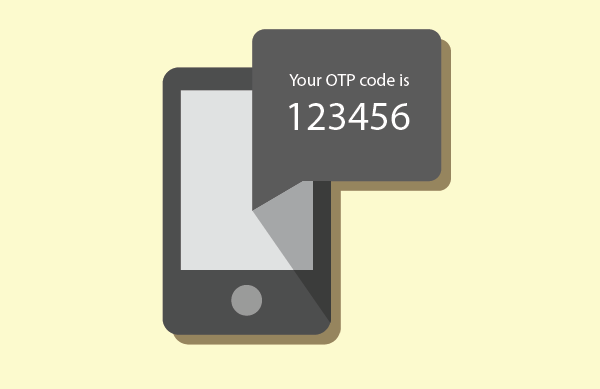Online activities like account verification, online transactions, and other processes widely use SMS verification to confirm the identity of individuals. It provides convenience and ease of use, but you need to evaluate it for safety and potential vulnerabilities.
With SMS verification, users must have their registered phone number to verify their identity. This deters fraudsters and prevents unauthorized account access.
SMS messages are usually encrypted during transmission, providing additional protection. But, it would be best to acknowledge that SMS verification is not flawless and may have vulnerabilities.
Let’s discuss the potential risks and vulnerabilities involved and discover ways to level its security. Keep reading for some helpful tips.
Vulnerabilities and Risks of SMS Verification
Here’s what you need to know about SMS verification risks and vulnerabilities.
1. SIM Swapping
SIM swapping is a vulnerability where an attacker convinces a network operator to switch the target’s number.
Once the transfer is completed, the attacker intercepts all incoming text messages, including verification codes. SMS verification bypasses this security measure and allows unauthorized access to sensitive information.
2. Phishing Attacks
Using phishing attacks, hackers trick users into giving out personal info and bypassing SMS verification.
Often, these attacks involve the creation of fake websites or malicious apps that mimic legitimate services. Users are tricked into thinking they provide information to a trustworthy source.
Once hackers have obtained a user’s mobile phone number through phishing techniques, they can intercept any SMS verification codes sent to that number. This allows them to gain access to sensitive accounts without the user’s knowledge.
3. Social Engineering
Cybercriminals use social engineering to trick people into disclosing confidential information and getting their phone numbers.
It involves exploiting human vulnerabilities, such as trust or fear, to convince the victim to take an action that benefits the attacker.
Attackers often impersonate legitimate customers or use social engineering to get customer support to transfer a target’s number.
What’s the Best Way to Make SMS Verification More Secure?
You can do a few things to increase the security of SMS verification. Here are some:
Choose a reputable SMS verification service
Selecting a trusted SMS verification service with robust security measures is crucial for safeguarding user information.
Reputable providers typically have strong encryption protocols to prevent unauthorized access and protect user credentials during transmission.
They also use techniques such as two-factor authentication, CAPTCHA, and IP blocking to ensure that only genuine users can complete the verification process.
But, not all SMS verification services are created equal, and some may compromise user data through poor security practices or fraudulent activities.
Before choosing a provider, please review their privacy policies, customer feedback, certifications, and compliance with relevant regulations like GDPR.
There is a reputable online SMS verification service provider, SMSverification.xyz, that provides great security for SMS verifications.
If you need SMS verification for Linkedin or other online activities, you can do that from this SMS verification service.
When you choose this reputable SMS verification service, you can rest assured that your sensitive information is safe.
End-to-end Encryption
You also need to ensure that the service offers end-to-end encryption. It makes it hard for malicious parties to intercept or manipulate verification messages with this encryption technique.
End-to-end encryption ensures that only the sender and intended recipient can access and read SMS verification messages.
The data is encrypted at one end and decrypted only when it reaches its destination, keeping sensitive information confidential throughout transmission.
This security measure will keep users’ info private and prevent unauthorized parties from accessing it.
With end-to-end encryption in place, you can be confident that your SMS-based authentication method provides robust protection against hacking attempts and other cyber threats.
Two-factor Authentication (2FA):
Implementing two-factor authentication (2FA) enhances security for the user login process. It requires users to provide a secondary factor along with their SMS code.
You can use a password or biometrics as a secondary factor. This significantly reduces the risk of unauthorized access, adding another level of security that an attacker would need to bypass.
One significant benefit of 2FA is that it can protect against phishing attacks. If an attacker tricks a user into giving away their SMS verification code through phishing, they still can’t access the account.
Using 2FA also helps prevent brute-force attacks. It makes it more difficult for attackers to guess passwords or codes.
Time-sensitive Verification Codes
Generating time-sensitive verification codes with a limited validity period can potentially deter attackers. It can make it arduous for them to gain unauthorized access. The threat of compromised user accounts looms large.
Users receive a unique code when logging in or performing sensitive actions on their accounts. The code is sent via SMS or other forms of communication. It remains valid for only a few minutes and becomes invalid afterward.
Using time-sensitive verification codes ensures that even if an attacker intercepts the code during transmission, they can’t use it after its validity period.
Anti-fraud Measures
Time-sensitive verification codes are an essential component of SMS verification, but they alone may not be enough to ensure the security of the process.
Hackers and other malicious actors can use automated tools to generate large volumes of requests that overwhelm systems and compromise user accounts.
Anti-fraud measures such as rate limiting and IP filtering have become increasingly important to counter this threat.
Rate limiting involves setting the maximum number of requests a user can make in a given period. This prevents them from overwhelming the system with too many requests.
IP filtering blocks traffic from known malicious sources or suspicious IPs, reducing the risk of fraudulent activities. This allows legitimate users to verify smoothly.
Employing these anti-fraud measures can help detect and prevent malicious activities. SMS verification stays safe and secured this way.
Secure Your SMS Verification and Protect Your Data
While SMS verification is convenient and widely used, potential vulnerabilities and security risks need consideration.
Opt for a trustworthy service provider to heighten the security of SMS verification. Not only that, it’s also vital to apply two-factor authentication as an added layer of protection.
Another excellent step is to use end-to-end encryption for an added level of security. Doing this will make your SMS verification process more secure, protecting your sensitive data from potential cyber threats.
By taking these measures, users can ensure the safety of their sensitive information and prevent unauthorized access. To protect your data, follow these safety measures next time you use SMS verification.








